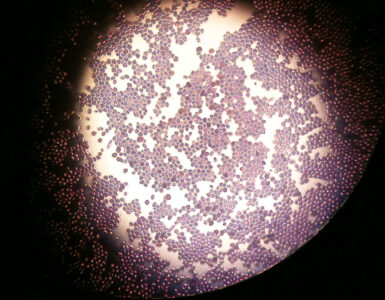by Rhodilee Jean Dolor
Humanity’s evolution into a highly intelligent, apex predator species may suggest that further evolution is not relevant for our survival. Instead of undergoing changes to ward off potential threats, find food and adapt to new environments, we can now rely on the knowledge and technologies we have discovered and developed throughout history to improve our chances to survive.
However, a study published in the Journal of Anatomy in September 2020 found evidence suggesting that despite the advances of our species, we continue to evolve. Study researcher Teghan Lucas, Flinders University, and colleagues reported physical changes observed in modern humans.
Microevolution
One of these changes is the increasing prevalence of the median artery. The median artery is the main vessel that supplies blood to the forearm and hand of the human fetus in the womb, but it typically starts to disappear around the eighth week of gestation when the radial and ulnar arteries develop.
The two arteries replace the median artery during developmental stages in the womb, so most adults do not have a median artery, but the researchers found that an increasing number of people now have all the three arteries. From occurring in just 10 percent of people born in the mid-1880s, the median artery existed in about 30 percent of people born at the end of the 20th century.
According to Lucas and colleagues, the median artery will become more common in the human forearm, and this will likely continue in the next 80 years. If the trend persists, researchers said most people will have a median artery of the forearm by the year 2100. The researchers said this shows that modern humans evolve faster than at any other time in the past 250 years. The phenomenon is known as microevolution of modern humans.
“This is micro evolution in modern humans and the median artery is a perfect example of how we’re still evolving because people born more recently have a higher prevalence of this artery when compared to humans from previous generations,” Lucas said.
Besides the rising existence of median artery in the forearm, the researchers also noted that a growing number of people now lack wisdom teeth and grow extra joints in their feet.
This is not the first time that microevolutionary changes in modern humans were observed. In a study published in the Journal of Anatomy in April 2019, Michael Berthaume, from Imperial College London, and colleagues found that the fabella, a small bone in the knee that was once rare in humans, is becoming more common.
The anatomical feature served as a kneecap in old world monkeys but disappeared when the ancestors of the great apes and humans evolved. The researchers found that the occurrence of fabella rose by more than threefold over the past 100 years. From existing in just 11.2 percent of the world’s population in 1918, the bone linked to knee problems and pain is found to be present in 39 percent of the world’s population in 2018.
What Causes Humans To Undergo These Changes?
Lucas and colleagues cite several factors that may have contributed to the increased prevalence of the median artery in the human forearm. These include mutations of genes that are involved in the development of the artery and health problems during pregnancy. As for the disappearance of wisdom teeth, Lucas explained that this has something to do with how the human face changes over time as we adopt new lifestyle practices.
“What’s happening with our mandible and our maxilla is that as our faces are becoming a lot shorter. We don’t have as much room for our teeth and this is happening over time because we’ve learned to use fire, we’ve learned to process our foods a lot more, so a lot of people are just born without their wisdom teeth,” Lucas said.
The researchers behind the fabella study also have a feasible explanation for the resurgence of the sesamoid bone. Berthaume said that the fabella made a comeback across the world just as people in most countries now have better nutrition.
“The average human, today, is better nourished, meaning we are taller and heavier. This came with longer shinbones and larger calf muscles – changes which both put the knee under increasing pressure. This could explain why fabella are more common now than they once were,” Berthaume said.
How Will Humans Look In The Future?
Many researchers think that humans will continue to evolve. As migration becomes a norm because of globalization, interracial mating is likely to occur, resulting in a type of evolution called gene flow, which happens when genes are transferred from one population to another.
According to Scott Solomon, author of “Future Humans: Inside the Science of Our Continuing Evolution,” this could lead to humans becoming more physically alike. He said that having both dark skin and light eyes could become a common thing in the future as a result of interracial mingling.
Besides environmental changes, technological advances will likely play an essential role in shaping future human physique and abilities. The gene-editing technology known as CRISPR has made significant advances in recent years, and the tool was already used in a highly controversial experiment in China that produced the world’s first known genetically-edited human babies.
Creating designer babies is still frowned upon today, but the technology that can help produce healthier, more intelligent, and better-looking offspring is already available, albeit in its early and developmental stages.
If the technology is perfected and the practice of genetically altering human embryos is no longer a taboo in the coming years, the future generation of humans will likely have a combination of abilities and appearance that we can only dream of today. The future humans will look like superstars, think like geniuses and run sprints like the pro athletes of today.









